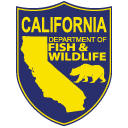
CDFW photo by M. Parker
On December 12, 2018 the California Fish and Game Commission took action to modify regulations for groundfish fishing. The changes went into effect January 2, 2019.
While many of the changes are good news and reflect improvements in the status of several species, not all changes resulted in increased opportunities for the recreational groundfish fishery. For California Groundfish Management Areas south of 40°10’ N latitude (near Cape Mendocino in northern California) to the California/Mexico border, the recreational daily bag and possession limit for lingcod has been reduced from two fish to one fish.
The rationale for the bag limit reduction lies in the scientific process behind how fish populations, or stocks, are evaluated. That process is called a stock assessment, and the results inform fishery managers about how much harvest can be allowed for a particular species or fishery across its range, or in a portion of its range. The healthier an assessment result, the more fishing opportunities can be considered. If an assessment result lands in a precautionary or overfished zone, then fishing opportunities may be limited or even prohibited.
Stock assessments for federally managed groundfish species use the best available science and are approved for management use through the Pacific Fishery Management Council process. These stock assessments also undergo rigorous scientific review by independent experts, and must meet federal standards.
In 2017, lingcod off the West Coast of the United States was assessed as two independent stocks, one off Oregon and Washington (northern stock) and the other off California (southern stock). The results of the stock assessment for the southern stock indicated that the population off California is continuing to grow; however, the assessment changed the perception of how quickly the stock is growing. This is in part due to a lack of life history information (such as information about how old the fish are), which helps to inform the amount of “recruitment”, or fish that have grown big enough to be caught and seen in the fisheries data. For the southern stock, recruitment was estimated to have been below average over the last 10 to 15 years, which suggests the population is not increasing as quickly as the northern stock. As a result, the southern stock is in the precautionary zone, whereas the northern stock is healthy.
More restrictive regulations were implemented this year to prevent further decline in the growth rate for the southern portion of the California lingcod stock. The more restrictive regulations will help California stay within a reduced overall lingcod harvest limit for the recreational and “non-trawl” commercial fisheries, which dropped from 683 metric tons (mt) in 2018 to 565 mt in 2019, and will drop to 471 mt in 2020. The reduction in the recreational lingcod bag and possession limit to one fish, as well as lower commercial fishery trip limit allowances, are now in effect south of 40°10’ N latitude (near Cape Mendocino).
So, what about north of Cape Mendocino? Why does the recreational lingcod bag limit stay at two fish in this area when the southern stock assessment covers all of California?
The answer is complex and rooted in history. West Coast groundfish management for all species is regional in nature, but when the original management framework was established decades ago, a hard line was established at Cape Mendocino to delineate ‘north’ from ‘south.’ This division remains for many stocks and stock complexes, including lingcod. Several sets of federal rules establish allocations of groundfish to the north and south of this dividing line for different commercial and recreational stocks and fisheries on the West Coast.
Meanwhile, lingcod data has improved over time, allowing stock assessors to use the best scientific information to define the best boundary lines for assessment purposes, independent of the pre-established management lines. In 2017, the best boundary line for lingcod stock assessment purposes was at the California-Oregon border– out of alignment with the established management framework, which specifies harvest limits and allocations for lingcod in all waters north of Cape Mendocino. As a result, the northern lingcod assessment in 2017 most heavily influenced the harvest limits and allocations for the entire northern area in 2019-2020 –allowing for the two-fish bag limit in California north of Cape Mendocino.

CDFW photo by M. Parker
Despite the lingcod bag limit reduction in most of the state, the overall outlook for groundfish fisheries in California is looking up. Populations of other species, such as canary rockfish and yelloweye rockfish, are increasing and groundfish regulations continue to be relaxed.
Several changes to the 2019-2020 recreational groundfish regulations are good news for anglers and include an increase to the season length in the San Francisco Management Area, a return to a year-round fishery for California scorpionfish in the Southern Groundfish Management Area, an increase to depth limits in the Southern Management and the Cowcod Conservation areas, and an increase to the canary rockfish bag limit statewide.
For up-to-date recreational fishing regulation information, check the California Department of Fish and Wildlife Groundfish web page, or call the Groundfish Hotline (831-649-2801) before you go fishing.
post by Melanie Parker and Melissa Mandrup, CDFW Environmental Scientists

